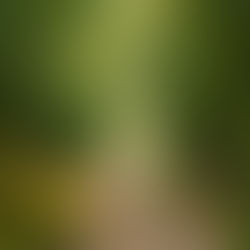Brewing Oolong- A Different Kind of Tea
So, there are teas, and there are teas. Some teas don't mind to have a hot bath straight up and provide a full bodied experience and taste, without exuding bitterness- more often than not they are the black teas (which are fully oxidised and therefore more robust). But , what about the Oolong tea which typically is classified to be somewhere between the gentle and unfermented green tea and the robust fully fermented black tea? Oolong is processed differently, where it is generally dried and partially fermented for differing lengths of time (greener generally is less oxidised and the darker more oxidised). Some Oolongs rolled into tight shapes during the drying process which looked similar to dragon tails- thus it is said that Oolong gained its nick name 'black dragon' by its appearance.
Oolong is by far the tea I get most enjoyment from. Some people are very passionate about the Gung Foo ceremony attached to this beautiful type of tea.... and then there is me, I appreciate the ceremony and beautiful tradition, however, I haven't felt the need to conduct the traditional ceremony.....yet. This is a post to help those who want to consume Oolong using their own tea accessaries. It's an introduction to a beautiful love affair that may just have you wanting to purchase more specialised tea pots such as the Gaiwan or Yixing clay teapot to enhance the flavour you can experience with your regular teapot (and it will enhance it). With a bit of practice there is a way to still get some beautiful brews using your smallish regular teapot..
Note: If a Yixing clay pot or a Gaiwan (designed for brewing Oolong) is not being used, please make sure you have a removeable strainer inside of the tea pot. We need to control the amount of steeping the tea does.
1. Prepare the pot:
Put some of the boiling water in the base of the pot and swirl it around (making the pot warm on the inside which will assist with the brewing and have a more consistent temperature)
2. Place the amount of tea you wish to brew (usually for a 400 ml pot I use a few teaspoons worth- or about 3 large pinches)
3. Place the strainer with the tea inside of the pot and allow the steam from inside the pot to rise through the tea, pour some hot water over the tea (just under half fill), and swirl the teapot around slowly, allowing the water to move over and through the tea.
4. Take the lid off the teapot, remove the strainer from the tea and place it on the bench or a plate next to you. Empty the contents of the teapot into a jug (I use it on my pot plants when cooled- I generally don't drink the first steeping as it is usually not the true flavour of the Oolong), you should be able to smell the aroma of the tea.
5. Now place the strainer containing the Oolong tea back into the teapot and pour some hot water over the tea. Place the lid back on the teapot and swirl the water through the tea. Allow to steep for 2-3 minutes. Pour the liquid into the cup. If the tea is steeped to your taste remove the strainer and set aside- ready for the next brew. Enjoy. Repeat the steps should you wish to continue to re-steep the tea.
Oolong tea can be steeped many times over (some good quality ones up to eight times, however in a tea pot not designed for Oolong maybe four steepings is a good aim). Each time it is steeped it releases some more of itself- its sweetness, its nutrients, its complexities, where the tea leaves opens up to being very large in size (compared to the tightly rolled tea at the start). Not only is the tea very high in antioxidents, is known to aid digestion, is renound to clear acne prone skin, and can aid in weight loss, but it also has some beautiful symbology when opening slowly and revealing more of its true nature over time....now that is breathtakingly beautiful, and that, together with its beautiful aroma and flavour, has made me fall in love with Oolong over and over again, each time I brew it. I hope you fall in love, too.
























